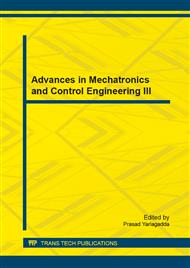p.8
p.12
p.19
p.23
p.28
p.35
p.39
p.43
p.47
Reduction of Risk Control Indicators of ERP System Based on Rough Set
Abstract:
the risk evaluation indicator system by enterprise resource planning (ERP) system is characterized by excessive subjectivity, lack of reasonable basis for establishing, and redundancy. The paper adopts the rough set theory, proposes attribute reduction algorithm based on information entropy, and makes attribute reduction on risk control indicators for implementation of ERP system by integrating cases from 10 enterprises that have already implemented ERP systems. The resultsshow that attribute reduction algorithm based on rough set is effective and available on reduction of risk control indicator for implementation of ERP system.
Info:
Periodical:
Pages:
28-34
Citation:
Online since:
October 2014
Authors:
Keywords:
Price:
Сopyright:
© 2014 Trans Tech Publications Ltd. All Rights Reserved
Share:
Citation:


